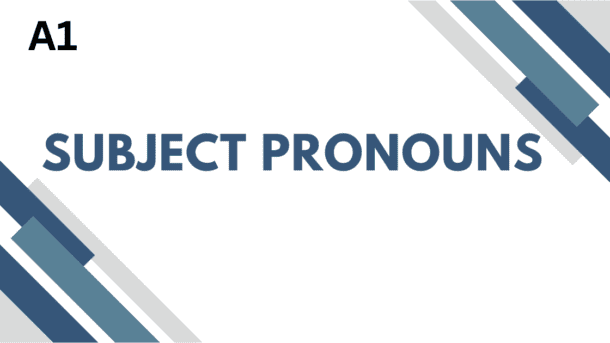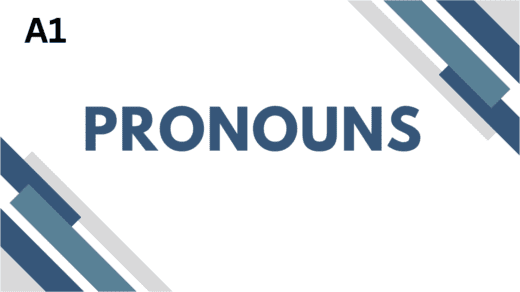Subject pronouns are words that take the place of nouns and function as the subject of a verb in a sentence. They indicate who is performing the action of the verb and help avoid repetition in communication.
List of Subject Pronouns
- I – Singular first person
- You – Singular and plural second person
- He – Singular third person (masculine)
- She – Singular third person (feminine)
- It – Singular third person (neuter/object/animal)
- We – Plural first person
- They – Plural third person
Usage
- First Person: “I” and “we” are used when the speaker is referring to themselves or a group they belong to.
- Example: “I am going to the market.” / “We are going to the market.”
- Second Person: “You” is used to address the listener or readers, either in singular or plural form.
- Example: “You are doing a great job.” / “You all are invited to the party.”
- Third Person: “He,” “she,” “it,” and “they” refer to others. “He” is for males, “she” for females, “it” for objects or animals when gender is unknown, and “they” for groups or in a gender-neutral context.
- Example: “He loves football.” / “She is a talented artist.” / “It is a beautiful day.” / “They enjoy hiking.”
Usage of Subject Pronouns:
- Replacing Proper Nouns: Subject pronouns can replace nouns that have already been mentioned to simplify sentences.
- Original: “Maria is a dancer. Maria loves to dance.”
- Revised: “Maria is a dancer. She loves to dance.”
- Establishing Clarity in Communication: Subject pronouns help avoid ambiguity by clarifying who is performing the action.
- Original: “Jack and Tom are friends. Jack plays soccer while Jack studies.”
- Revised: “Jack and Tom are friends. Jack plays soccer while he studies.”
- In Questions and Negatives: Subject pronouns are still necessary when forming questions or negative statements.
- Question: “Are you coming to the party?”
- Negative: “They do not want to go.”
Agreement Rules
- Number Agreement: Subject pronoun must agree with the noun they replace in number (singular/plural).
- Singular: “He runs fast.”
- Plural: “They run fast.”
- Gender Agreement: In the third person, “he” and “she” must match the gender of the noun. “It” is often used for objects or animals whose gender is not specified.
- Example: “The dog is barking; it seems hungry.”
Examples in Sentences
- Declarative Sentences: Subject pronouns can easily replace the noun.
- Original: “Maria is studying.”
- With Pronoun: “She is studying.”
- Interrogative Sentences: Subject pronouns can be used to form questions.
- “Are you ready for the exam?”
- “Is he coming to the party?”
- Negative Sentences: Subject pronouns are essential in forming negative statements.
- “I do not like spicy food.”
- “They do not go to the gym regularly.”
Common Errors:
- Confusing subject pronoun with object pronoun (e.g., using “him” instead of “he”).
- Incorrect: “Him likes pizza.”
- Correct: “He likes pizza.”
- Omitting the subject pronoun in informal speech, which is acceptable in some contexts but not in formal writing.
Practice
To reinforce your understanding of subject pronouns:
- Replace the nouns in the following sentences with the correct subject pronouns:
- “Maria and John are friends.”
- “The cat is sleeping.”
- Identify the subject pronoun in the following sentences:
- “They went to the concert.”
- “I will join you for lunch.”
Conclusion
Subject pronouns are foundational elements of English grammar that facilitate clear communication by replacing the subjects of sentences. Mastery of these pronouns allows for more fluent and effective expression in both spoken and written language. Understanding their correct forms and usage will significantly improve your grammatical accuracy and overall command of English.




